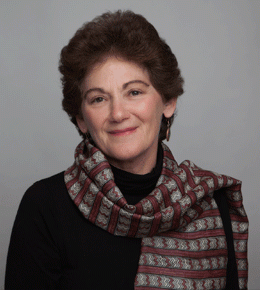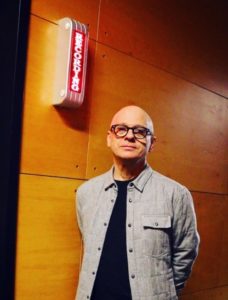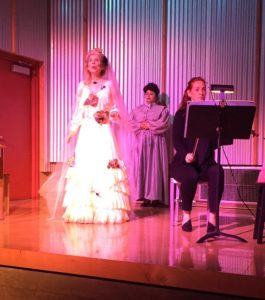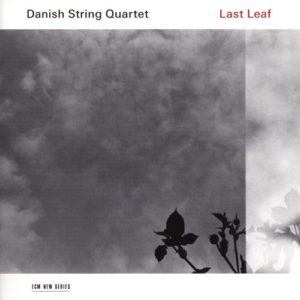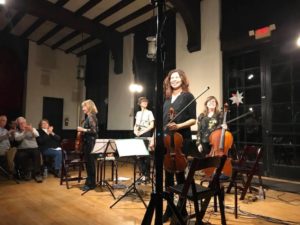 On Sunday, February 18, 2018, the Pasadena Conservatory of Music hosted a faculty recital featuring the Panic Duo of Nick Gerpe and Pasha Tseitlin. A full concert program of contemporary music was performed, including a world premiere by Gilda Lyons, a Los Angeles premiere from Laura Kramer and music by Anne LeBaron, Jennifer Higdon, Juhi Bansal and Reena Esmail. Barrett Hall was completely filled for the occasion, and an extra row of chairs crowded the stage to accommodate the overflow crowd.
On Sunday, February 18, 2018, the Pasadena Conservatory of Music hosted a faculty recital featuring the Panic Duo of Nick Gerpe and Pasha Tseitlin. A full concert program of contemporary music was performed, including a world premiere by Gilda Lyons, a Los Angeles premiere from Laura Kramer and music by Anne LeBaron, Jennifer Higdon, Juhi Bansal and Reena Esmail. Barrett Hall was completely filled for the occasion, and an extra row of chairs crowded the stage to accommodate the overflow crowd.
Fissure, for violin, piano and electronics (2016), by Anne LeBaron opened the concert. This piece was premiered by the Panic Duo in December, 2016 and is inspired by the Fall of the House of Usher by Edgar Allen Poe. The electronic recordings for this piece resulted from a visit by the composer to an upstate New York mansion that is said to be haunted. The title of the piece refers to the large structural crack in the Usher house that ultimately collapses at the end of the Poe story. Fissure opens with Gerpe entering from offstage, staggering into his seat at the piano. A short arpeggio is heard followed by a dramatic crash. Tseitlin arrives, walking slowly to center stage with soft mewing sounds emanating from his violin. A clattering is heard in the speakers accompanied by some uptempo runs in the instruments, all casting a mysterious and unsettling spell. The tension continues to build as the piece moves forward, with quiet stretches and piano trills alternating with agitated violin passages brimming with psychological anguish. The sounds of rushing wind and a deep rumbling from the recording added to the atmosphere. A sense of the theatrical persisted to the finish, with the violinist pacing restlessly about while playing softly, and then exiting offstage. Fissure is a remarkable portrayal of the Poe story, with all of the emotion and drama skillfully drawn out by the Panic Duo.
Whip the Devil Round the Stump (2017), by Juhi Bansal, followed. This began with complex and rapid runs in the piano accompanied by a series of slurred scales on the violin. The two instruments then traded phrases back and forth, often in counterpoint, and this made for a nicely interweaving texture. A slower section intervened, led by a solemn violin line and some low notes in the piano. The uptempo pacing returned at the finish with more shared passages and a moving, active feel. Whip the Devil Round the Stump is a robustly dynamic piece that extracts the maximum amount of energy from just two players.
Jhula Jhule (2013) by Reena Esmail was next and this piece was described as a “fantasia on two Indian folk songs.” Opening with a quiet, ethereal trill in the piano, the violin soon joined with slower phrases that invoked a warm and wistful feeling. An Indian lullaby was clearly one of the inspirations for this piece; the violin supplied the singing voice and the piano line gave a sense of nostalgic distance. The contrast between the piano and the sweetly light melody in the violin was especially effective – Vaughan Williams’ The Lark Ascending came briefly to mind. The playing, especially in the violin, was strongly expressive resulting in a beautifully peaceful sensibility. Jhula Jhule is restful and tranquil – music that sits comfortably in the listener’s ear.

